
Over the years from 2013 I had used 2 Lensbaby optics – the double-glass 50mm, which I used mainly indoors for macro shooting, and the Sweet 50 50mm, which I used mainly outdoors for middle distance shooting. By October 2017 I was ready to add to my selection of optics, with the Edge 80(mm), which would give me a distance lens for outdoor landscape shooting.
Note: see my Meet the Lensbaby article for more detailed information on the Composer Pro system, and how it fits together and works.
The Edge 80 is the largest and heaviest optic, and the most expensive one I’d bought too. As I already had two Composer Pro ‘bases’ I could buy just the optic and swap out the lenses as I wanted. I quickly settled for the Sweet 50 and Edge 80 as my working choice – and the original double-glass was left in the box (only being revived now as I am writing these articles!)

The Edge 80 optic is an 80mm F2.8 lens that will fit easily into Lensbaby’s Composer Pro body units. It has a 12-blade circular diaphragm that stops down to F22. And once on the Composer Pro body it has the front/back movement and the tilt/rotate action of the ball joint.

And the set of two macro converters that I got for the Sweet 50 work perfectly well with the Edge 80 as well, allowing for much closer macro work. The macro rings are inserted before the optic, and are 8mm and 16mm. And they can be used together to get even closer to the subject. Having to remove the optic to insert a macro ring is not ideal, especially when shooting outdoors, so now Lensbaby has produced another solution, a “46mm Macro Filter Kit” set of +1, +2, and +4 screw on filters. I haven’t had a chance to try them out and compare results, but they are a neater solution for outdoor shooting when you need a quick macro shot.
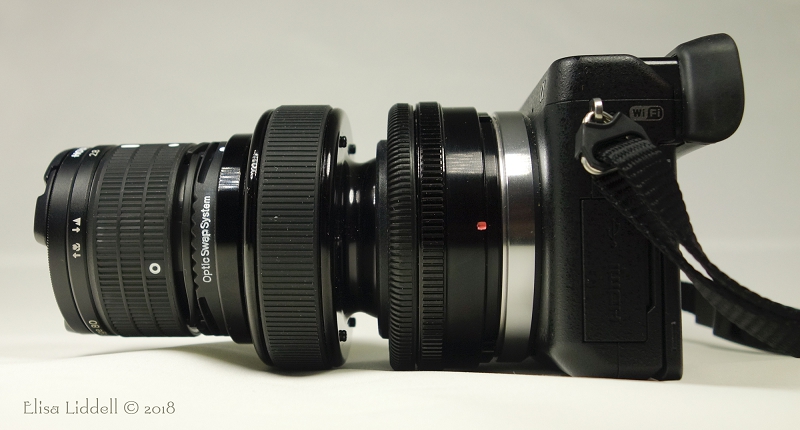
Here is the full assembly on the NEX-6 body, with the the 8mm macro converter in place before the optic. As I mentioned in the first article this full working assembly weighs in at 685grams, which I find is light and flexible enough to carry with me anywhere! I took both the Sweet 50 and Edge 80 out in the long hot summer of 2018 – I have the small shoulder bags I use for NEX-6 to keep them secure, and I use them hand-held without tripod.
Before I get into analysing some shots, I must make a few comments about the optic. Lensbaby have discontinued the Edge 80, so finding one is becoming harder. They now sell the Edge 50. I don’t know why – I guess it was not as popular as other lenses. In my opinion it is a real shame as it is a wonderful lens. But that’s the way of the world – just as Sony discontinued the NEX series of camera bodies. I am finding myself with more and more ‘vintage’ kit, not just Russian lenses from the 1960s. I am not alone in rating the Edge 80 highly – there is an excellent article by Jake Hicks here to follow up on: comparing to a standard 85mm lens.
He was so impressed by the sharpness of the images he got, that he asked other photographers to guess what lens had produced them. The resulting guesses included some very expensive, high-end specialist lenses! He comments: “I think the sharpness is even more impressive when you consider the fact that this really is an ‘art’ lens and supposedly not designed to the same ridiculously expensive standards as some other lens manufactures. On that note I know plenty of lenses that cost well in excess of £1000 that are nowhere near this sharp. On top of that, those lenses don’t have a huge ball-joint-tilting-mechanism slapped in the middle of them like this Edge 80 and they still aren’t this sharp. If Lensbaby ever decide to step away from just the art-lens market I’d be seriously interested in what they come up with”.
So my first shots are looking at the sheer quality of the optic itself. I find myself using it as a ‘straight’ lens, confident in the quality of the results it can offer. The following shots were taken using the NEX-6 – which gives a quite small image size (by today’s standards) of 4912x3265x24 pixels. These examples are SOOC.
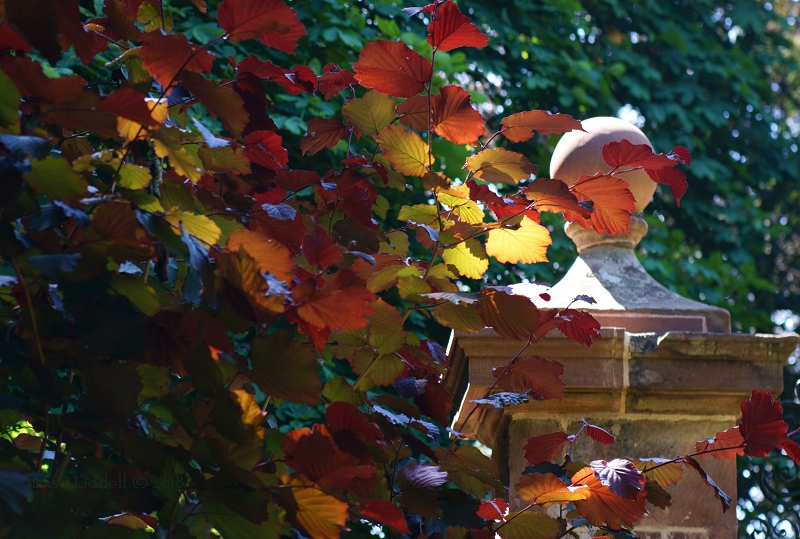
The colour values, the handling of light, and the clarity of the shot are all so good! It is in the background tree bokeh that you can see the hint that this is the Edge 80 at work. There is an angled sweep to the leaves, slicing softly from top left to bottom right, that gives a sense of movement. There is a huge contrast in light to handle here – the sunshine was bright, bleaching the colour out of the stone where it hit full-on; and the deep shadow with no light penetrating the leaves in the bottom left of the frame.
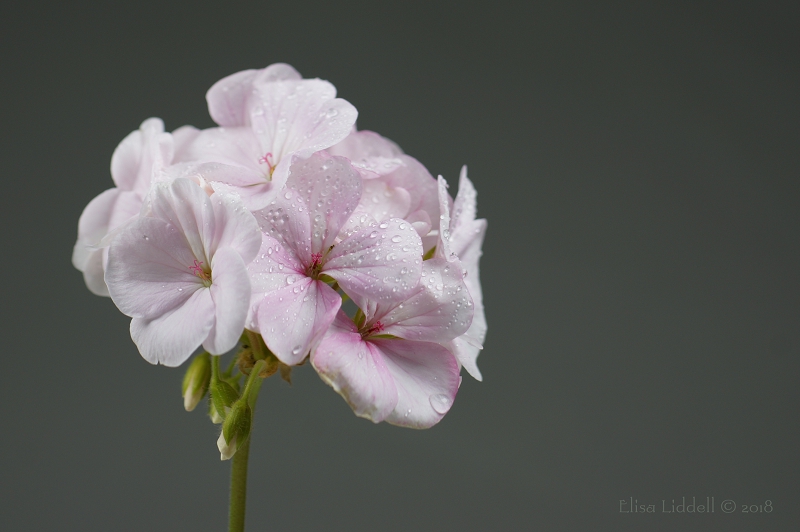
Using the Edge 80 as a more macro lens, with the 16mm macro converter, and shooting delicate pink geranium flowers.
For the sharpness of the shot, and the clarity it can rival my expensive Sony 100mm F2.8 macro. And the colour values are superb too. Getting up close the quality is all there.
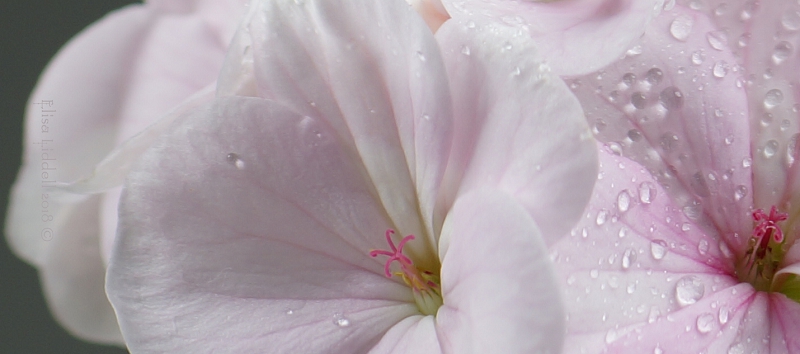
And next we can look at what’s different about the Edge. Where the double-glass and Sweet 50 create a round ‘sweet spot’ of focus, with the blur falling away in all directions – the Edge 80 cuts a linear slice of focus right through the shot. Sometimes it is hard to pick it out (at least for me!) so I’ve tried to take some shots to show the effect clearly. I’ve used thin red arrows to help show the slice.

Here the angled slice of focus cuts through the rocks and the hillside, leaving the figures and the car out of focus, and nicely blurred
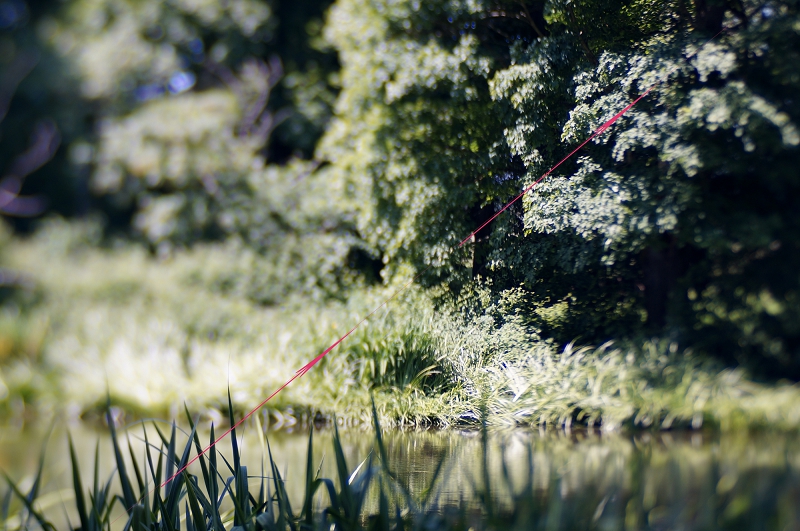
Here the sweep of the slice cuts diagonally through the shot, with the blur turning into bokeh in the distance, and even a hint of swirl in the foliage beside the water. As with all the Lensbaby optics, these varied and complex effects are not things that I could ever produce using post-processing. And there is something magical about never quite knowing what you will see when you transfer your shots to the large computer screen! I love that sense of the unexpected – it makes each shoot an adventure.
Then I just stood by the loch and took 3 shots just adjusting the aperture ring to move the slice of focus across the photo. I started in the middle, as the dead log interested me.

The red arrows show the the line of the slice, though of course when the trees recede the focus will be lost.

Then I moved the focus to the bottom right of the frame, slicing through the trees closest to me. As well as the focus plane moving, the colour values also change, parts of the log become pink!
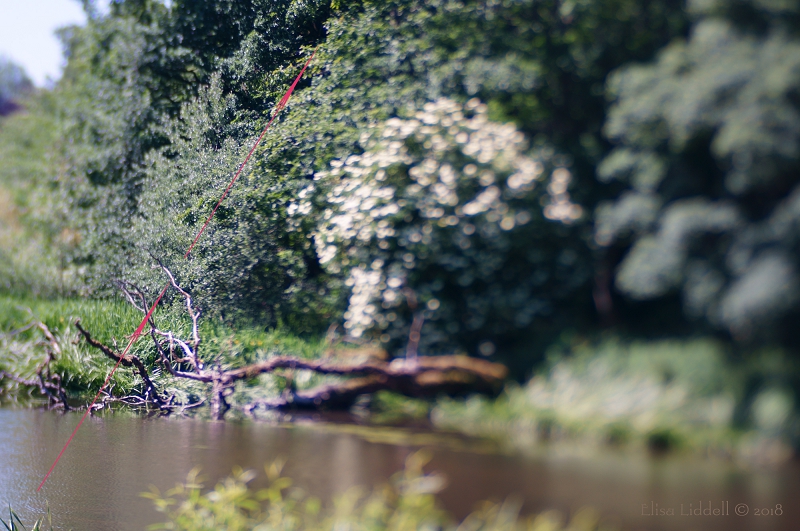
Then I moved the slice of focus right up to the top left of the frame, to complete the comparison trio.
It took me longer to understand and appreciate the Edge 80 than either of my other optics. With no obvious sweet-spot it isn’t as easy to create the shot. There are no sweeping zoom and blur effects that give such a sense of movement to the double-glass and Sweet 50. I feel that there is still a whole lot to learn. I’ve only recently started taking it out and about with me, and I do prefer learning by doing. Books and videos can help, but there is no substitute for clicking the shutter and seeing what emerges! Thank heavens for digital cameras – not having to compute the cost of processing a roll of film, I can experiment and not worry if I throw most of what I shoot into the computer bin! I format the SD card and start again ;o)
On to the next section which looks at how the Lensbaby optics can help shape the composition of your shot Where Art meets Glass
Flickr holds Elisa’s online Photo Gallery
© 2019 Elisa Liddell
